Crypto Academy / Season 3 / Week 2 - Homework Post for professor @asaj
Introduction
In finance trading, the valuation of an asset is partially dependent on the reaction between speculative participants in the market. An investor's sentiment in the market relies on their ability to process information about the market presented in fundamental and technical forms, and this, in turn, reflects their trading psychology.
A round collection of the trading psychology of investors within a market builds up the market sentiment of an asset, thus reflecting the market psychology of investors and the value of the asset.
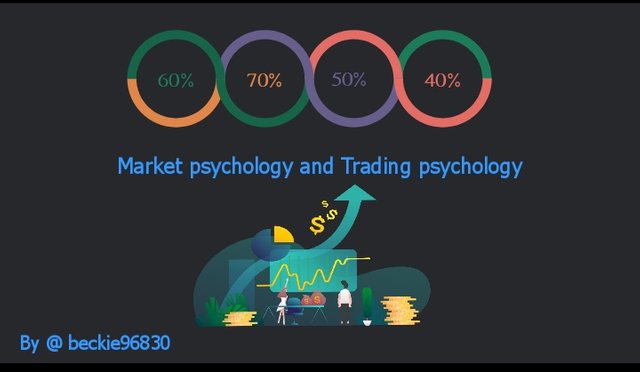
Psychology plays an important role in trading as it helps trade understand what is happening in the market and how to capitalize on available opportunities.
Part A
The case study given is an example of what type of psychology? Explain the reason for your answer.
Source
The case study scenario describes the full form of Trading Psychology. Jane as described, is an individual investor in the cryptocurrency market that had an awful investing experience because of poor decisions based on emotions, fear, and hope, completely disregarding the basis of proper analysis.
As started, she invested late in an asset at $15, but the value of the asset increased, and her investment increased to $20 which is a +33.33% gain. But she failed to understand the change in market sentiment, as her investment went into negative, in hope that the bull run will eventually return to the market, she held her position. This led to her position being taken out by Stoploss at a $5 value which is -66.66% from the price purchased.
Jane invested without foreknowledge about price movements and market psychology, causing her a great deal of emotional pain.
I have been Jane many times but I learned from my mistakes
5 Trading Biases relating to the case study
The case study highlighted some trading biases that affected Jane's trading psychology. They included:
Emotional Bias:
Emotion is part of the human mechanism that affects reasoning and behavior. Investors always try to suppress their emotions while investing and rely solely on applied technical analysis.
In the case study above, Jane was affected by poor trading psychology, hope, fear, and regret emotions. She invested late without a clear understanding of other investors' sentiment and market psychology.
When her investment turned negative she held the position hoping the sentiment will change. And after her position was taken out, she feared to reinvest when the market sentiment changed to her original bias and regretted selling her position blaming Stoploss.
Anchoring Bias:
Anchoring Bias bases reasoning on the first information accessed, causing huge reliance on the information with little to no notice of other pieces of information.
The case study highlighted the anchoring bias by Jane not taking into consideration the change in market sentiment, and holding on to her position which resulted in a significant loss.
Confirmation Bias:
Confirmation Bias sorts for pieces of information that align with one's thoughts, causing a sense of relief when that information confirms one's opinion.
Jane experienced excitement when the direction of price was bearish after she was taken out by Stoploss, this to her was justified as she was not active in the market.
Also, Jane felt displeasure when the market sentiment changed, filled with thoughts of how she could have been capitalizing on the move if only her position wasn't stopped out.
Herd Mentality Bias
Herd mentality bias refers to investors making decisions based on what others investors are doing, often characterized by a group of dependent investors relying on other sources without proper analysis and information carried out by them.
The herd mentality bias was highlighted in the case study by Jane getting trade signals from a Telegram group and executing on the signal.
Bound Rationality Bias
Bound Rationality bias sorts to emphasize satisfaction than on what is obtainable. This bias often causes a clouded judgment as matters of personal interest suppress logical reasoning.
In the case of Jane, she had a bound rationale when her $15 investment peaked at $20. She thought the price would continue in her favor, failing to take note of the data shown by the market.
Well, she really couldn't do much, she's an inexperienced investor.
Avoiding the listed Trading bias
a) Emotional bias can be avoided by relying on logical reasonings, absorbing facts seen over reacting to what you feel. This might seem difficult, but it is achievable.
b) Anchoring bias can be avoided by observing changes and reacting to changing situations, this often requires experience to pull off. Although there are situations you just have to react by being patient.
c) Confirmation bias can be avoided by reacting to situations by asking the Why question, sorting for reasons why an event took place.
d) The herd mentality can be avoided by evaluating and carrying out analysis by oneself and not relying on someone to make decisions.
e) Bounded rationality bias can be avoided by careful observation and acceptance of uncertainty. Sometimes things happen for you to learn.
Part B
What type of analysis can be used to monitor market psychology and trading psychology, and why? Identify the differences between trading psychology and market psychology.
Source
Market psychology
Market psychology as stated in the collection of investors' sentiment in a market of a particular asset causing direction move of price.
Market psychology can be monitored using technical analysis on price action charts and fundamental analysis through verified sources. Technical Analysis provides investors with the graphical representation of price movement in form of charts, showing price within a specified time. A proper understanding of this tool will improve the understanding of the market sentiment of an investor.
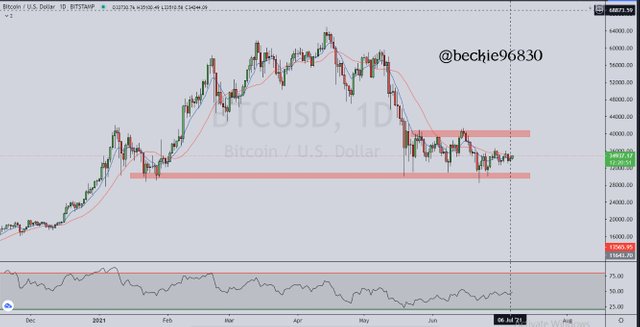
Likewise fundamental analysis affects the cryptocurrency market, as information is absorbed quickly and traders react to preserve the dollar value of their assets.
Trading Psychology
Trading psychology refers to the emotional state of an investor. This refers to feelings that can affect reasoning with clarity and result in bad decisions if those emotions get the better side of the investor.
Investors can monitor their trading psychology by developing a refined set of rules for engagement and well-balanced trading systems involving the use of indicators and rules. This helps improve the logic and discipline of the investor within the market.
These rules act as safety guild lines for the investors to protect them from irrational decisions within the market.
Difference Between Market psychology and Trading Psychology
| Market psychology | Trading Psychology |
|---|---|
| This is a collection of investors' sentiment of the market represented in the price action chart | This is an individual (investor) sentiment of the market. |
| 2) Monitored with technical analysis, fundamental analysis, market structure understanding | 2) checkmated with a set of defined rules and strategies to prevent irrational behavior. |
Measuring Market psychology using charts
Market psychology can be measure through observation and study of price action charts, and interpretation of fundamental news as investors react to news fast.
Scenario A (Market Structure)
Through observation of market structure, investors can measure the market psychology and identify the strong sentiment. This helps investors identify potential investment opportunities in the crypto world and avoid emotion-based trading.
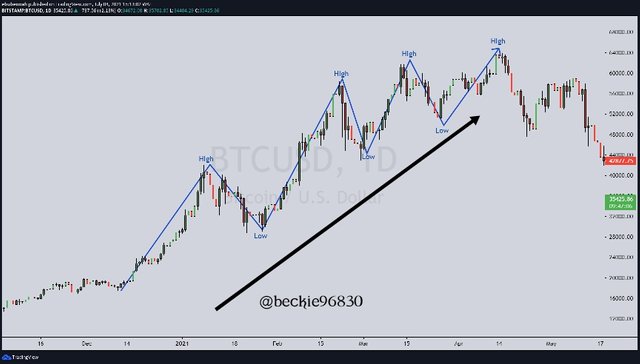
Through the use of technical analysis, investors can avoid the trap of overbought and oversold situations by buying the lows and selling the highs, as shown above. An investor who understands market structure can identify when to hold onto a position.
Scenario B (Fundamental analysis)
Fundamental news like government policies, bans, crypto whale announcements affects the market sentiment in cryptocurrency trading. When a piece of fundamental striking news is released, this causes panic, and often small capital-based investors sell their positions in an attempt to protect the dollar value of their portfolio. This can be visualized as an instance of herd mentality bias, causing rapid movement of price in the market.

Reference Article
Scenario C (Price action Indicators)
Price action Indicators like moving averages, Relative Strength Index, Divergence, Market profiling, are calculated to indicate possible reactions of price based on previous market data.
These indicators provide investors with a snapshot overview of the probability of market sentiment shift, price reaction within certain areas of interest, etc. This correlates with the anchoring bias, such that pieces of information accessed are considered without sticking to one side of the probability.
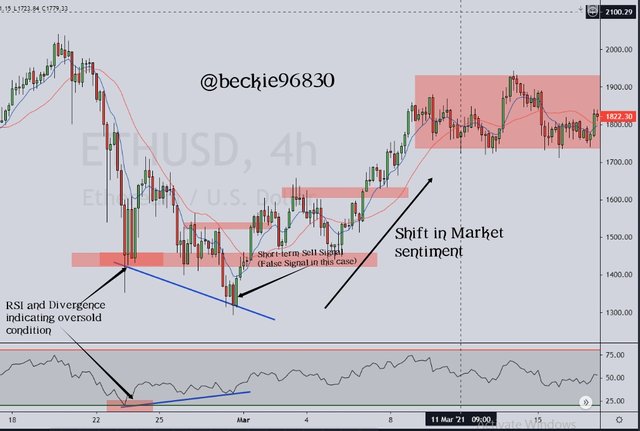
Illustrate the above Ethereum chart, the indicator hinted at oversold conditions early but the price action was still bearish. If an investor anchored his sentiment on price action alone he would have executed wrongly and get clapped by Stoploss.
Scenario D (Confluence)
A confluence of fundamental and technical analysis can be demonstrated on the confirmation bias both in positive and negative ways.
When an investor with the audience(group of students or mentees) develops a sentiment on a crypto asset (Ex. forecasting a bearish run), The feeling of satisfaction is sensed when the market move in that direction in line with technical and fundamental analysis.
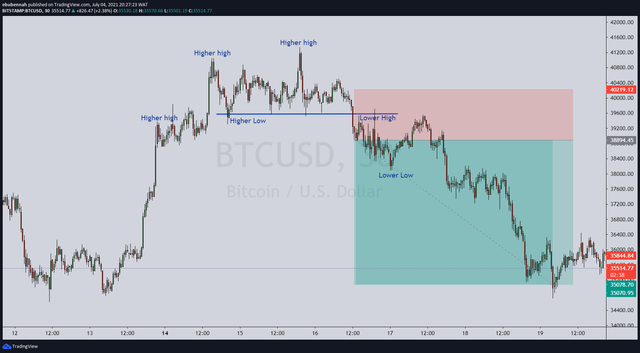
Scenario E
Observing market structure and indicators provides a solid indication of possible price movement when they align. This offers a significant level of probability on the setup. But, in some cases, the indicator and technical will align, but the market will do otherwise. Investors must often allow the notion that "you can't win every trade"
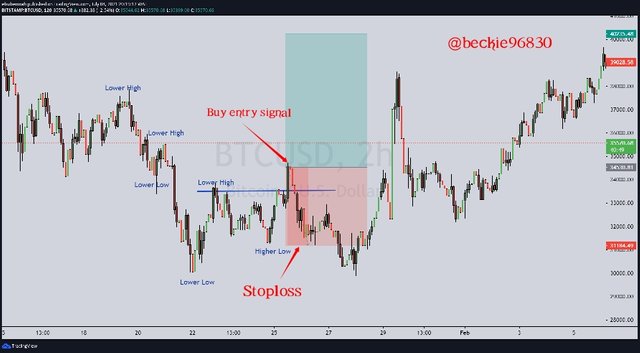
This reflects the bound rationality bias accepting the uncertainty that exists.
Efficient Market Hypothesis
The efficient market theory describes the balanced nature of a traded market. As stated, it indicates that the market reflects in price all information about itself. This makes it impossible to find a way to beat the market and earn a consistent excess profit above the average market return.
Information about the market is often released as fundamental news that stirs reactions in the market as investors move to capitalize on the movement. Moves based on fundamental analysis are usually quick and sometimes corrected, within hours in some cases. The notion that a market is efficient is back by the availability of factors that make up the need for a market, they include the presence of buyers and sellers(liquidity), availability of information (valuation data), balanced cost of transactions, etc.
There are three levels of EMH
Weak EMH:
The weak efficient market hypothesis states that previous market data does not influence the current market price. This, in turn, invalidates the basis of technical analysis, as the movement of price is dependent on currently available information.
Semi-strong EMH
The semi-strong efficient market hypothesis states that all newly available information is absorbed by the market instantly, thus the market can not support consistent gains above-average gain margin.
Strong EMH
The strong efficient market hypothesis states since all information is reflected in the price, no investor (public and corporate) can earn above the average return of an asset.
Advantage and Disadvantage of EMH
| Advantages | Disadvantages |
|---|---|
| 1) Reflect the actual value of asset | 1) The risk effect is high since it reacts to all new information. |
| 2) Yield more profit for speculative investors | 2) it is difficult to predict actual price movement. |
| 3) Investors with access to inside pieces of information capitalize on the move | 3) Investors can only indicate the direction when the move has started. |
Conclusion
Market psychology and trading psychology contribute to determining the value of a given crypto asset. Market psychology indicates the overall opinion of investors regarding an asset, whereas trading psychology describes the opinion of an investor regarding his decision-making, and abilities to interpret information recorded about the market.
Technical analysis and fundamental analysis are powerful tools for investors to study and determine the market psychology of an asset, in other to avoid investing wrongly and at the wrong time.
The efficient market hypothesis argues that the basis of technical analysis and fundamental analysis is irrelevant since the market reflects all available information in price quickly. This can be verified to be true with the recent bearish run during the early phase of the covid-19 pandemic.
In my opinion, I argue that the efficient market hypothesis can not explain the reason why prices react to certain levels (support and resistance) areas of the market respecting previous market data.
I agree with the notion that "you can't beat the market."
Thank you professor @asaj for this psychology lesson.
Superbly done @beckie96830!
Thanks for performing the above task in the second week of Steemit Crypto Academy Season 3. The time and effort put into this work is appreciated. Hence, you have scored 9 out of 10. Here are the details:
Remarks:
Your unique approach to answers have earned you the maximum points in most parts. You have displayed a remarkable understanding of the topic. I particularly like how you merged other topics taken by other crypto professors in your answers. It is an evidence of your understanding.
That said, a little bit of more depth in your answers to Question 3 (with practical examples) and Question 6 would made have this a perfect work. Overall, it was a superb presentation. Again, thanks for contributing your time and effort to the academy. We hope to see more from you in the coming weeks.
Thank you professor @asaj.
I hope to improve on it in your next assignment.